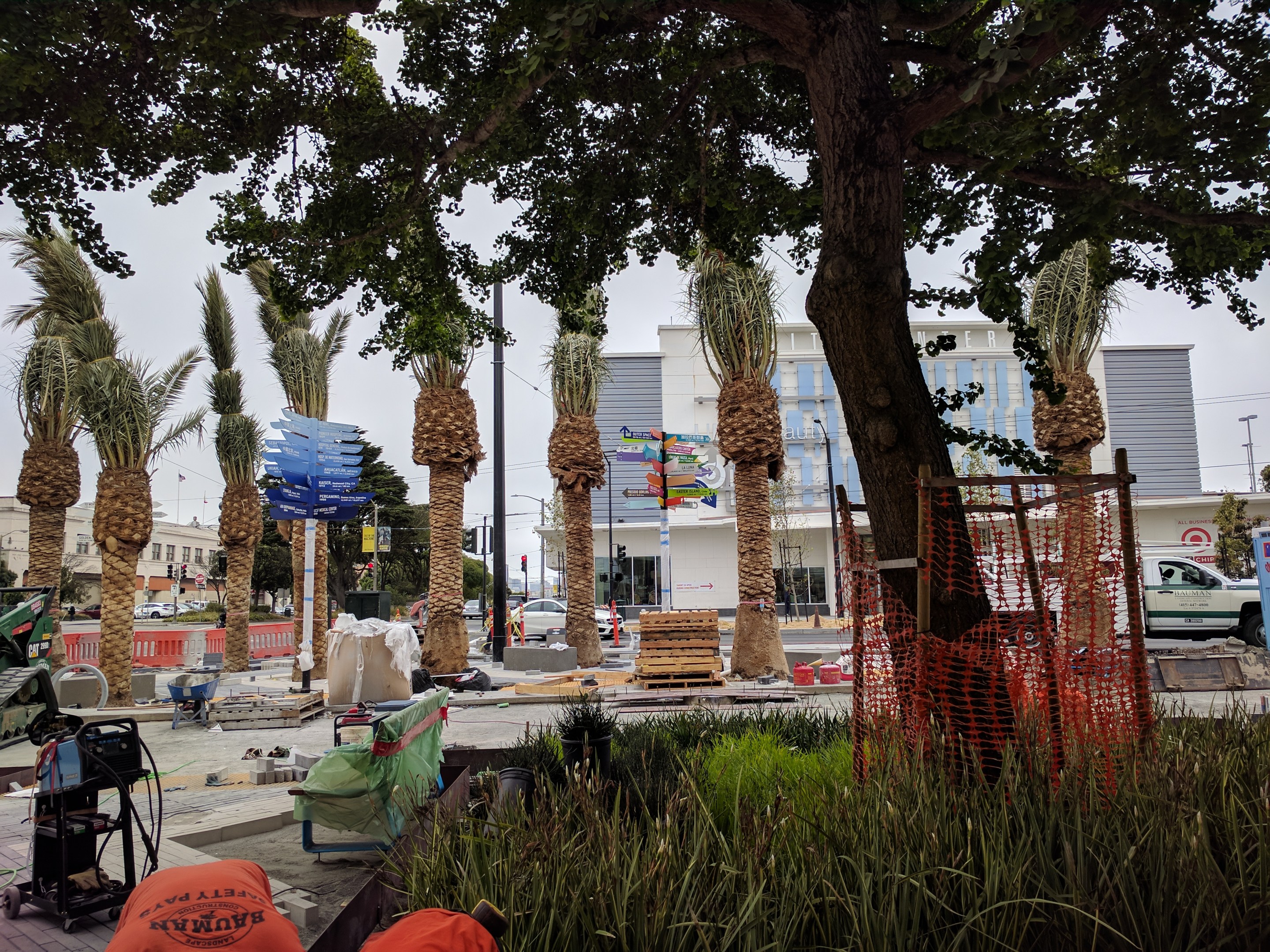Note: GJEL Accident Attorneys regularly sponsors coverage on Streetsblog San Francisco and Streetsblog California. Unless noted in the story, GJEL Accident Attorneys is not consulted for the content or editorial direction of the sponsored content.
Construction on the $26 million Masonic Avenue Streetscape Improvement Project is almost finished--the final bits of work should wrap up at the end of the month. The raised bike lanes and new center median are already in place. Yet to be done: green paint (okay, thermoplastic) for the bike lanes and finishing up the landscaping, on a project that started planning ten years ago.
Just to review the stats, from 2009 to 2014, there were 113 traffic collisions on Masonic Avenue between Fell Street and Geary Boulevard. Those include 14 pedestrian collisions and 24 bicycle collisions, including two fatalities.
Meanwhile, the first reviews of the improvements are in, and the San Francisco Citizen blog, for one, isn't exactly enamored. It calls the bike lane/intersection treatments, specifically at Fell, "suicide lanes." SF Citizen, which posted a long photo journal of the new infrastructure, also writes that "this project is hardly a 'complete transformation' or, indeed, any transformation at all."
Streetsblog brought up some similar issues when the project was in the design phase. SFMTA piloted raised bike lanes on Market Street and learned that they don't work--that delivery trucks etc. will continually block them. But they decided to use them on Masonic anyway (parking was eliminated to make space for them and the new median). At the time, the thought was that there are fewer businesses and therefore the lane will be blocked less frequently on Masonic.
But this:

Streetsblog also observed an Uber pickup in the bike lane and another car parked on it, in addition to the two vehicles in the picture above, all during one quick back and forth by bike from Fell to Geary.
The lack of protection also makes riding on Masonic continue to feel unsafe; this is hardly infrastructure that's suitable for skittish riders, with giant trucks rumbling past a sometimes minimally raised, sometimes not raised, unprotected bike lane (in places where the lane is raised, it's only by two inches, so it doesn't even show in the photos).
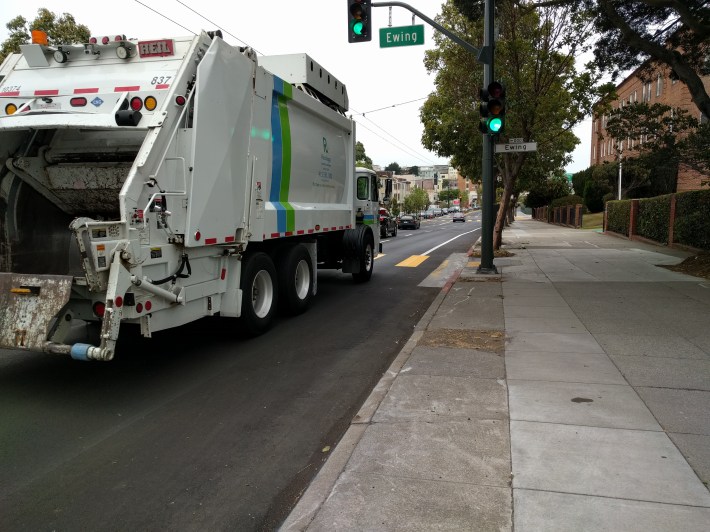
So why wasn't there a protected bike lane in the designs? That may come down to the ten-year time frame--designs were out of date by the time work started, said the San Francisco Bicycle Coalition's Chris Cassidy. "Everyone acknowledges...there are some treatments that are being employed that probably wouldn’t make it into the plans if we were designing it today."
A manager at SFMTA said (Streetsblog is withholding the name since he expressed his opinion outside of official channels) there could have been protected bike lanes between the street trees and the sidewalk, but neighbors refused to allow any sidewalk narrowing "...even though some are over twenty feet wide, with few pedestrians." The official is referring to an early option that would have converted five feet of the sidewalk into a protected bike lane (which would still leave a 13-foot sidewalk and a wide buffer).
That still doesn't explain why there couldn't be some kind of barrier between the bike and automobile lanes. The same official--and Streetsblog has heard the same notion previously from SFMTA about the Masonic project--blamed the number of driveways. But, as Streetsblog has repeatedly posted, somehow they manage to design safe bike infrastructure around driveways in the Netherlands.
The bus boarding islands, meanwhile, are a welcome addition, at least where they've been implemented (which isn't every stop). They eliminate the dangerous shuffle that cyclists and buses normally have to do to get around each other at bus stops.
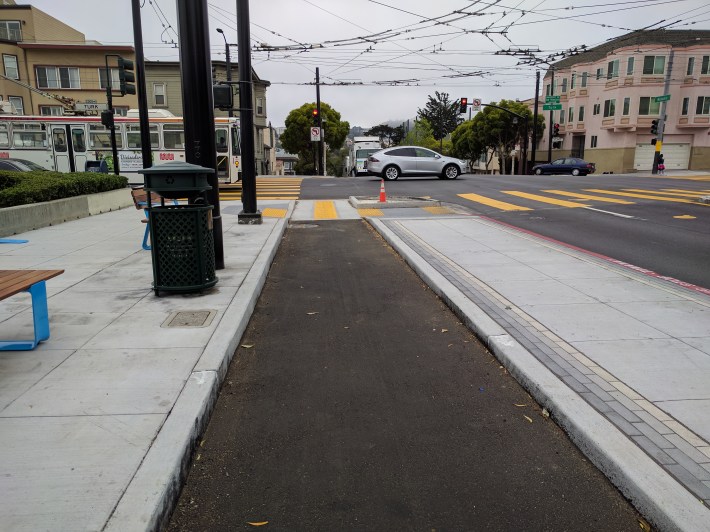
But where the project really falls down is, again, at intersections. The worst ones, as SF Citizens pointed out, are at Fell (as seen below) and Geary. The Masonic "bike lane" that feeds into Fell, if one can call it a bike lane, wedges cyclists between multiple lanes of turning traffic.
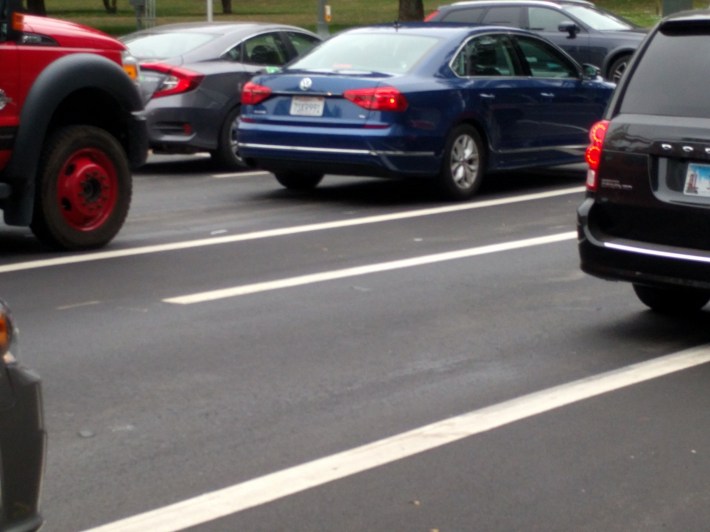
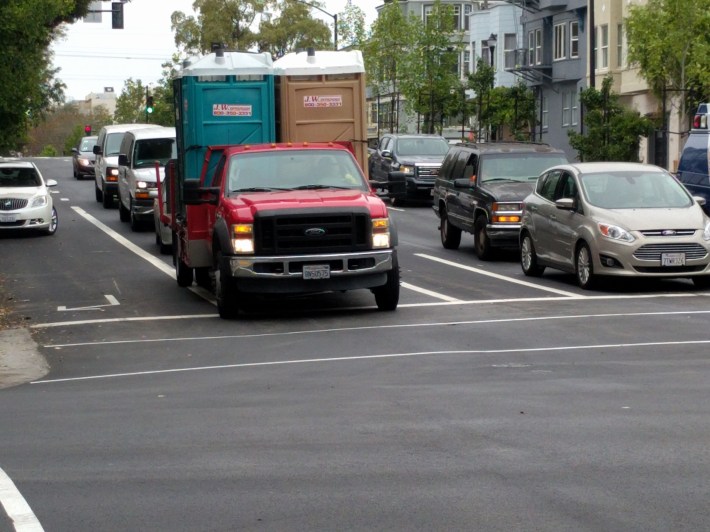
But even the intermediate intersections are harrowing, such as the one pictured below at Masonic and Hayes. There's no marking going across the intersection (one hopes this will be added) and the bike lane abruptly disappears, forcing cyclists and cars and trucks to vie for the same space. Advocates have been pushing over and over again for better intersection treatments that don't squeeze cars and bikes together, at just the place where cyclists and cars need more distance, not less, to avoid turning conflicts. San Francisco's Dutch-based intersection at 9th and Division provides safety for cyclists and pedestrians, so why not use similar designs on Masonic?
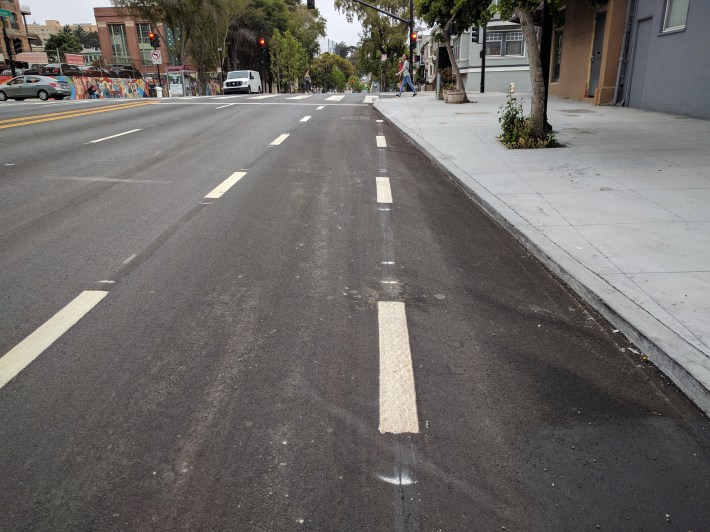
Aesthetically, at least, the street looks nicer, especially with the new median, which hosts two species of trees, according to Chris Buck, Urban Forester with San Francisco Public Works.
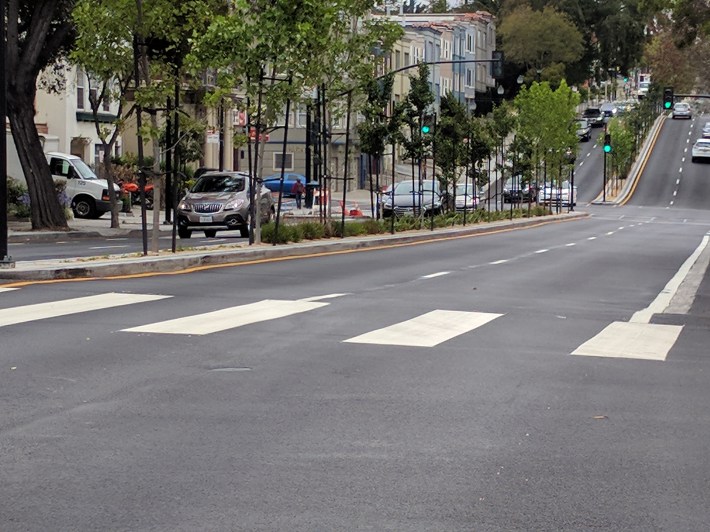
The "Ginkgo biloba (ginkgo is the common name) and Liriodendron tulipifera (tulip tree is the common name)," should do well in the narrow median, he said. "Public Works and Friends of the Urban Forest have both planted the two species above in pretty confined locations and they do just fine....you have to be a tough species...to survive the streets of San Francisco and these two species are up to the challenge."
Meanwhile, the SFBC is hopeful improvements will continue, such as adding safe-hit posts to keep Ubers and delivery trucks off the new bike lanes. And intersection treatments, which are desperately needed. "Nothing in the city is permanent," said Cassidy. "We will continue working on improvements."
Have you ridden or walked Masonic lately? Tell us what you think.
